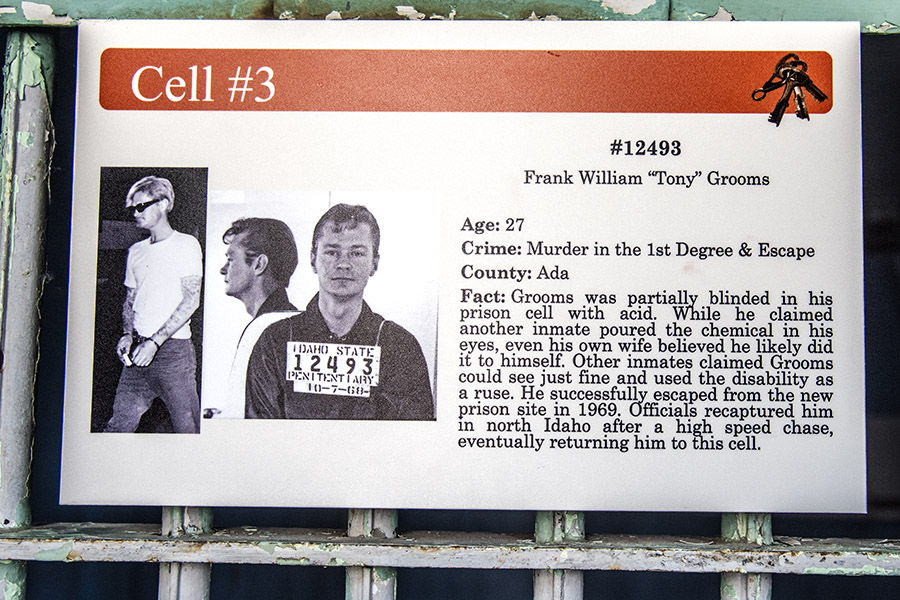By Joe Berk
I don’t know what it is about prisons that fascinates us. Susie and I have been on three prison tours (the Old Idaho State Penitentiary, the topic of this blog, is our third; the earlier two were Alcatraz and the West Virginia State Penitentiary in Moundsville). It’s not just us; abandoned prison tours are a hot ticket and Hollywood loves to do prison movies. The Shawshank Redemption was a hugely successful film (I watch it every time it’s on the tube), and Netflix is currently running Orange is the New Black (don’t waste your time on that one). Google the topic “Why we love prison shows” and the Internet will light up with underlying psychological reasons: The ultimate loss of control, the inherent brutality of man, surviving after losing everything, etc. But that’s enough armchair psychology…let’s get on to the topic of this blog: The Old Idaho State Penitentiary.
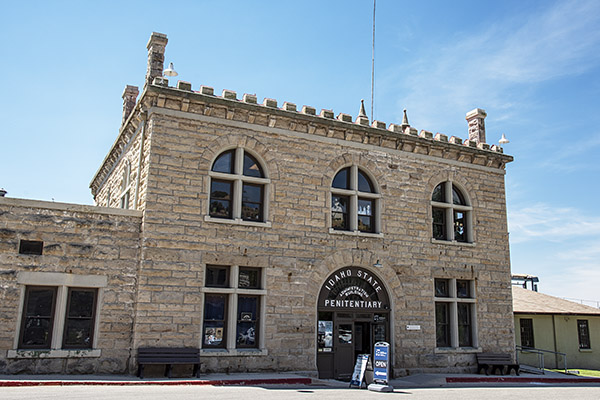
Idaho (actually, Idaho convicts) built the Old Idaho State Penitentiary in 1870. The construction was sandstone mined from the hills surrounding Boise. It held prisoners for 101 years, and during that time, this old prison had its share of escapes, executions, and experiences that make for an interesting tour. Perhaps the most interesting thing about the Old Idaho State Penitentiary is that the grounds are so beautiful. It’s more like a botanical garden than a prison.

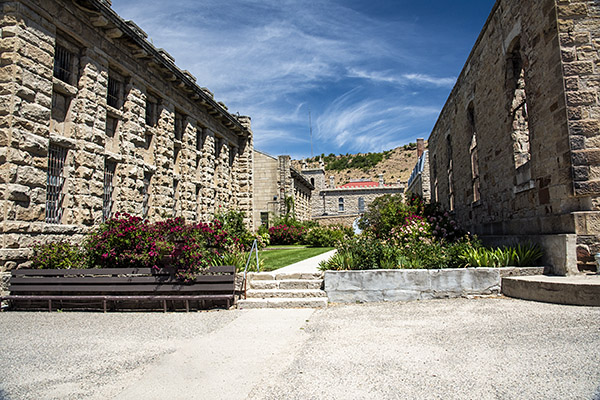
One of our fellow tourists asked our guide, Eric Overzet, if the grounds were as nice when prisoners were housed there as they are today. Eric told us they were.
The first structure we entered was the prison’s multi-purpose building. It served a number of functions, including being a shirt factory, a shoe shop and then a shoe factory, a bakery, a license plate shop, the laundry, a hobby room, and a loafing room. It also housed the prison showers.

The prison’s shoe and bakery outputs were particularly successful after they started selling to the public, and to hear Eric tell it, they made a hell of a product for a very low price. The Idaho State Penitentiary manufactured shoes that cost a fraction of what store-bought shoes cost, and they lasted much longer. The shoes were so good the prison worked itself out of the market. They saturated the Boise shoe market and the business folded. Other ventures were more successful. When the prison bakery started selling donuts to the public, word quickly spread that they were the best donuts in town. The prison produced 4,000 donuts a day. People lined up outside the prison to buy them. A lot of donut sales were to police officers (some of whom probably put the guys who made the donuts in prison).
Next we toured the cell blocks. Things looked bleak. You wouldn’t want to live in a place like this.
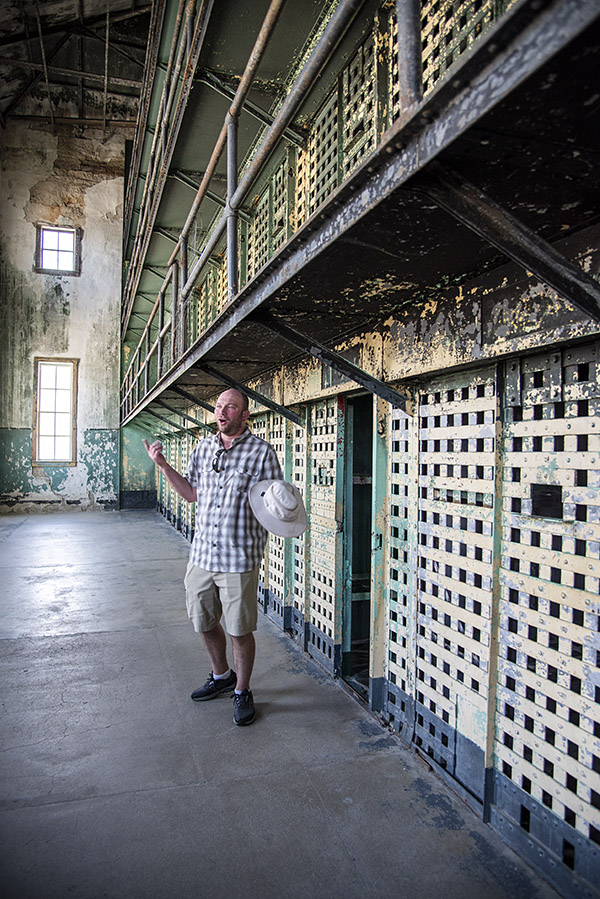
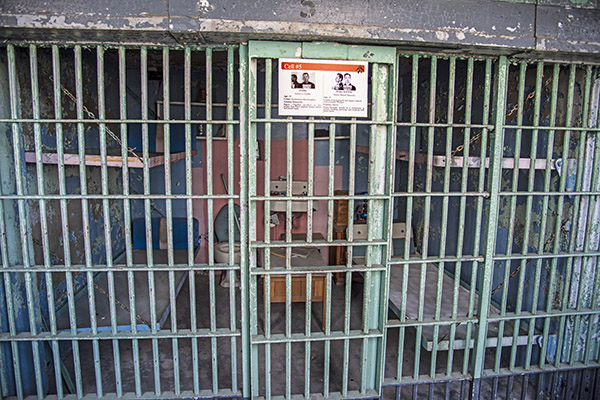
We saw the levers that opened and closed the cell doors. Seeing them was like seeing a scene out of a movie. As a retired mechanical engineer and all-around gearhead, I enjoyed seeing the mechanism. Everything operated mechanically; there was no software or any of the other intangible things we would use today.

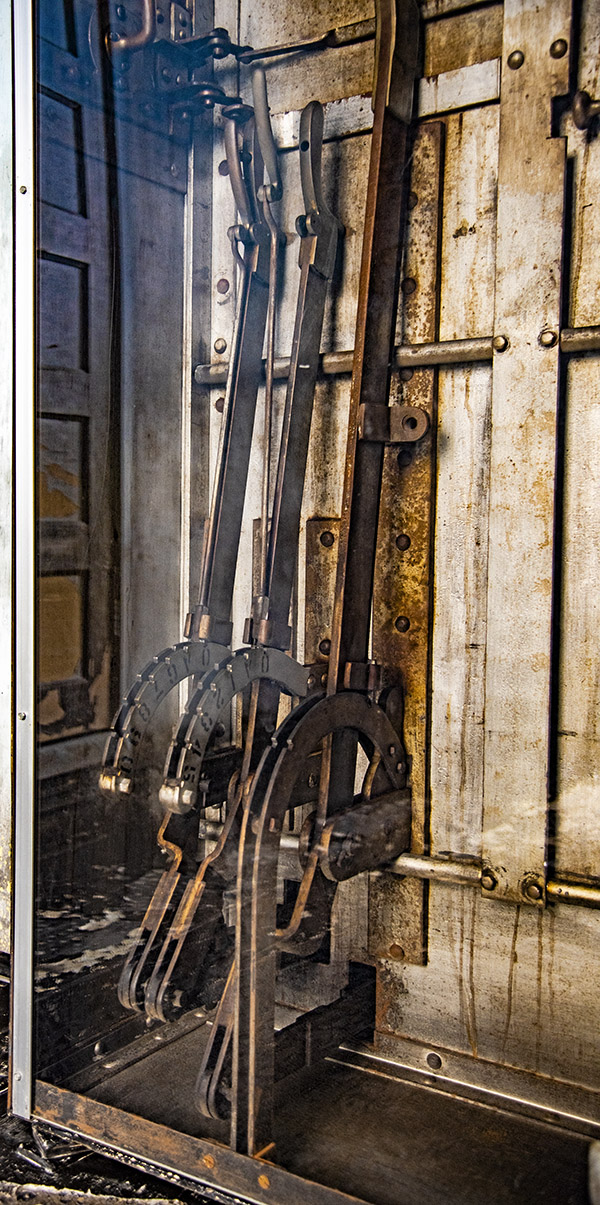
There are five prison halls in the Idaho State Penitentiary, and several different forms of “special housing” (i.e., solitary confinement). I couldn’t remember all the ones Eric described, but one stuck in my mind: A set of underground 4 ft by 4 ft by 4 ft cubes for solitary confinement. There were hatches at ground level through which a prisoner entered. It was hot when we were there. I can’t imagine what it must have been like in those little boxes in Idaho in the summer, nor can I imagine what it must have been like in the freezing winter months. In 1909, inspectors from the State of Idaho decided these 4 ft cubes were too cruel for human confinement and directed the prison to stop using them. The prison told the inspectors they agreed, and then they continued to use the little punishment boxes until well into the 1950s.

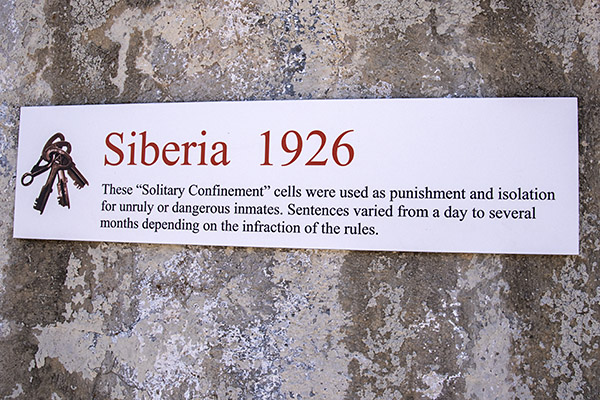
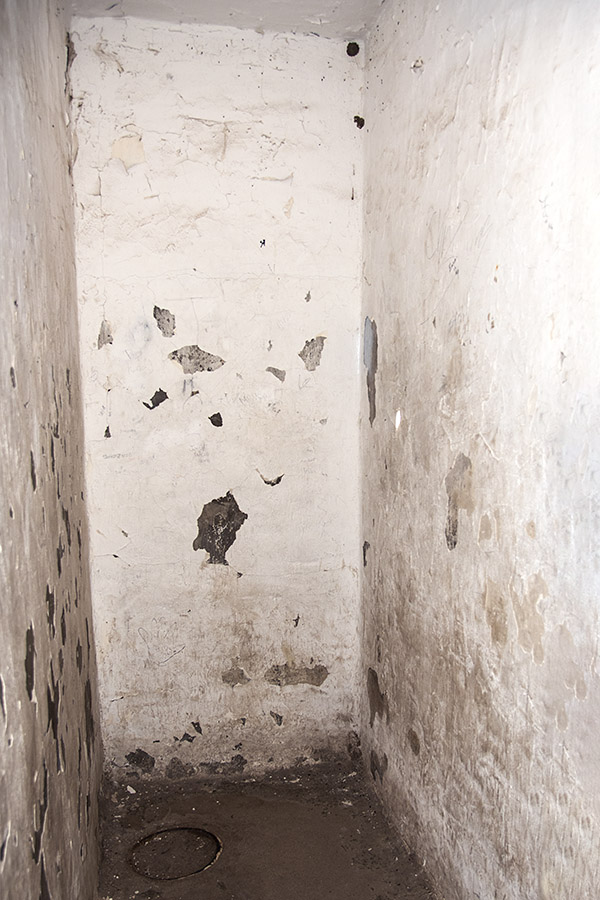
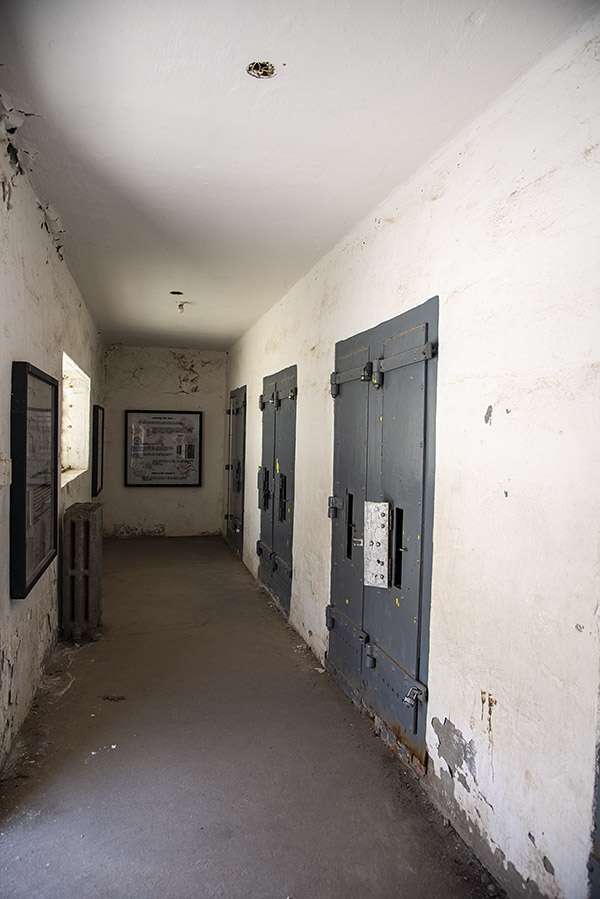
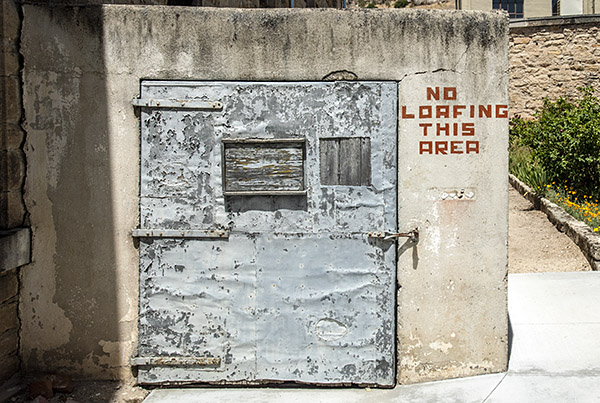
As one might expect, the execution chamber and Death Row are areas that get the most attention. When the Old Idaho State Prison was in operation, hanging was the only execution method. Idaho uses lethal injection today, but when good old-fashioned hanging was in vogue the execution chamber was designed around it. The noose hung from a mount in the ceiling, with the trap directly below it. I shot these photos from the witness gallery window.

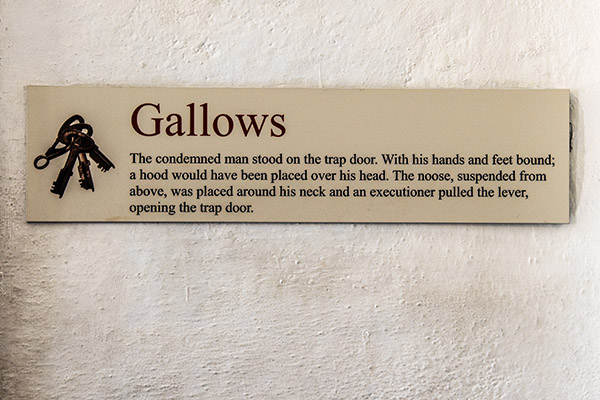
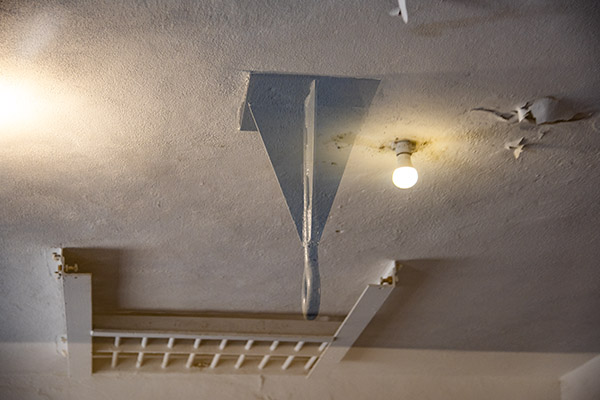
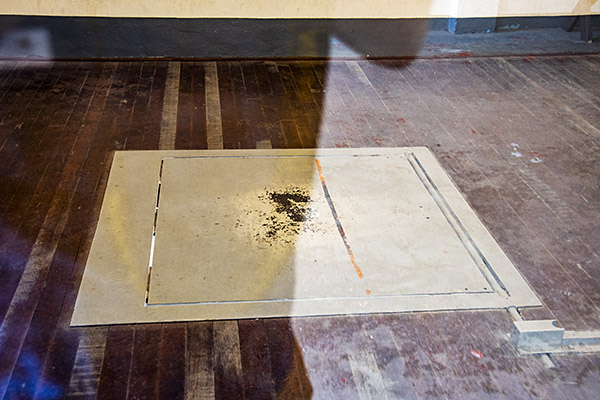
You may want to go back up to the featured photo at the top of this blog. Old Tony Grooms (featured in that picture) was a real bad boy. There were several placards explaining the crimes of occupants in different cells and what they did while in prison. Old Tony had acid splashed in his eyes and convinced the prison guards he was blind. The guards figured it out when nurses were in the prison for a medical emergency and they saw Tony following them with his eyes. I can’t tell that story as well as our guide Eric can; that’s a good reason for you to visit the Old Idaho State Penitentiary.
We enjoyed the Old Idaho State Prison tour. You can also do a self-guided tour, but we were lucky. We arrived just as Eric’s tour was about to start. My advice is to go for the guided tour. Eric was a magnificent guide and entertaining storyteller, and he knows a lot about the place. We would not have gotten as much out of the tour just wandering around by ourselves.
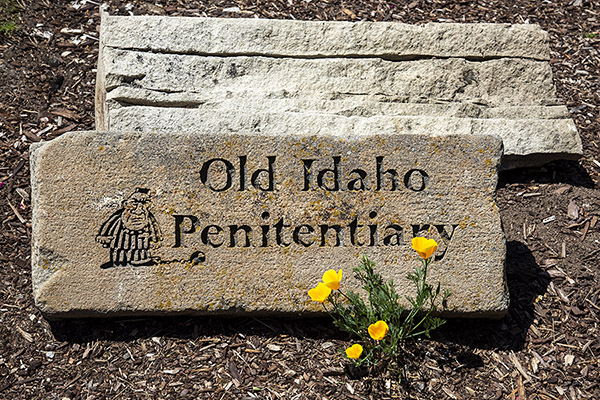
The Old Idaho State Penitentiary is in Boise’s Historical District at 2445 Old Penitentiary Road. Admission is only $8. The guided tour is another $2, and that’s a hell of a deal.
Never miss an ExNotes blog:

